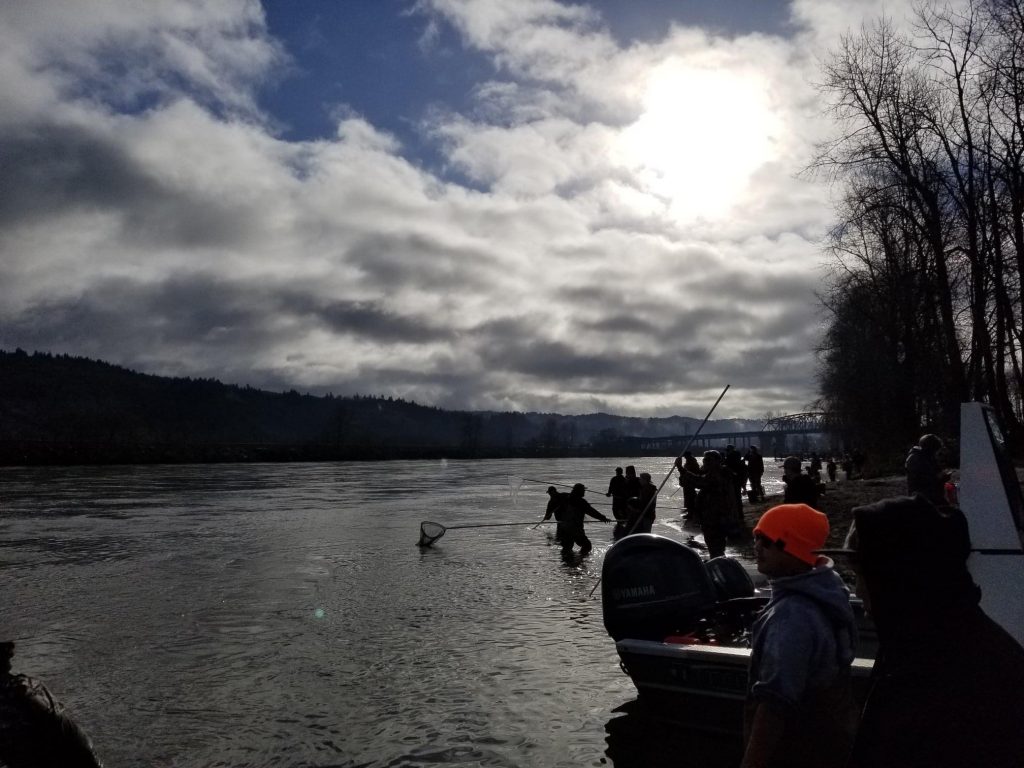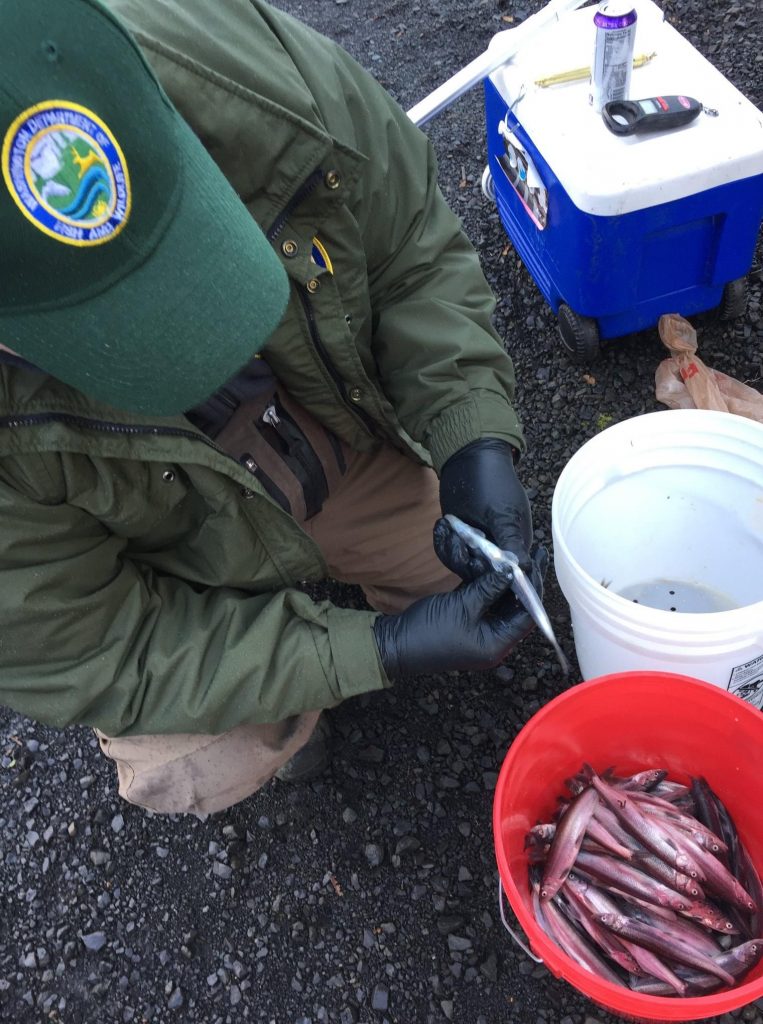Sport smelt dip-netting opens Tuesday on the Cowlitz River and there’s already a good amount of fish present in Gerhart Gardens Park area Leave a reply

Sport smelt dip-netters will get a chance to try their luck in a section of the Cowlitz River on Tuesday (March 2) from 8 a.m. to 1 p.m. from the Highway 432 Bridge to the Al Helenberg Memorial boat launch located approximately 1,300 feet upstream from the Highway 411/A Street Bridge in Castle Rock.
“The fishery proved extremely popular in 2020, with thousands of dip-netters lining the Cowlitz River banks,” Laura Heironimus, the lead Washington Department of Fish and Wildlife (WDFW) Columbia River smelt manager said in a news release. “Dip-netters caught an estimated 35,000 pounds of smelt during the first of two fishery openings last year.”
In 2021, with the coronavirus pandemic continuing to impact day-to-day life around the world, fishery managers and public health officials are urging dip-netters to recreate responsibly by wearing masks, avoiding overcrowding, and practicing social distancing.
“This fishery is very popular, and people come from all over to take part in it,” Heironimus said. “We want people to be able to get outdoors and enjoy this unique opportunity. But it’s extremely important that everyone wears a mask and gives each other space to comfortably and responsibly enjoy this fishery. There’s plenty of river for everyone.”

Kessina Lee, WDFW’s Southwest Region director, said in the news release that the department worked alongside county officials and the Governor’s Office when making the determination to open the fishery.
“The conclusion was that this fishery could be held safely, but it requires everyone to do their part to reduce the risk of infection,” Lee said. “If you feel sick, stay home. Don’t go shoulder-to-shoulder with other people, even if they’re pulling in fish. We have to work together to make sure everyone goes home healthy at the end of the day.”
Each dip-netter may retain 10 pounds of smelt per day, with no more than one day’s limit in possession. Ten pounds is about a quarter of a 5-gallon bucket. No fishing license is required to dip net for smelt in this limited fishery. All smelt caught must be retained up to the daily limit.
New this year, all individual harvesters must use a separate container to hold their catch, and the container must be in the harvester’s presence or identified with the harvester’s name. It is unlawful to harvest smelt from a vessel.
WDFW Enforcement officers will be out to help ensure public safety, as well as enforce the 10-pound limit and other regulations while the fishery is open.
On Monday, the research fishery caught 4,247 pounds for a 708-pound average per delivery. Anytime there’s more than 200 pounds it is indicative of a very strong run. The research fishery has occurred eight times since it began on Jan. 28.
The 2021 run is expected to be moderate in size, similar in magnitude to the estimated returns of 3.8- to 4.2-million pounds the last two years.
“The 708-pound catch per delivery ranks as the highest we’ve seen in a single-day average (since 2014),” said Laura Heironimus, a WDFW biologist. “In 2015 we had a few days over 500 and 450 pounds per day. This might be an indicator that we have a very large run-size. Some of the preliminary data this year shows the catch could be over 3-million pounds and that is a pretty good sign.”
Smelt were detected in the Columbia River in early January. Upon opening the commercial fishery, smelt presence appear to decline and few fish were harvested during the first three weeks of the commercial retention period.
Other catch prior to Feb. 22 by date showed 59 pounds was landed on Jan. 28 for 30 pounds per delivery; none were caught on Feb. 1; 5 on Feb. 4 for 5; 100 on Feb. 8 for 100; 22 on Feb. 11 for 11; none were caught on Feb. 15; and 6 on Feb. 18 for 6.
Due to the apparent increase in abundance, WDFW staff extended a research-level commercial fishery from March 1-11 on Mondays and Thursdays from 5 a.m. to 5 p.m. each day. The extension would maintain the conservative approach used in the 2021 smelt fishery and would continue to provide biological and run-strength data as well as some fishing opportunity.
During 2014-2017 and 2020, limited recreational fisheries occurred in the Cowlitz River. The fishery was restricted to one to five days annually (5 to 6 hours per day). The Sandy River was only open in 2014 and 2015 (two to four days annually; 6 hours per day). Annual recreational harvest averaged 134,256 pounds (range 541–290,770) with an average exploitation rate of 1.50% (range 0.03-2.77%). There was no recreational fishing opportunity in 2018 and 2019.
Sport dip-netting for smelt was a huge draw from the 1980s to the early 2000s when thousands of people dressed in waders and dip-nets would line the Cowlitz River shoreline.
Smelt returns have steadily declined to the point where they were listed on the Endangered Species Act in the spring of 2010. Commercial and recreational fisheries were subsequently closed in 2011-2013.
Ocean environmental conditions were favorable for marine survival during 2012-2013 but then deteriorated dramatically although improvement was seen the past few years.

